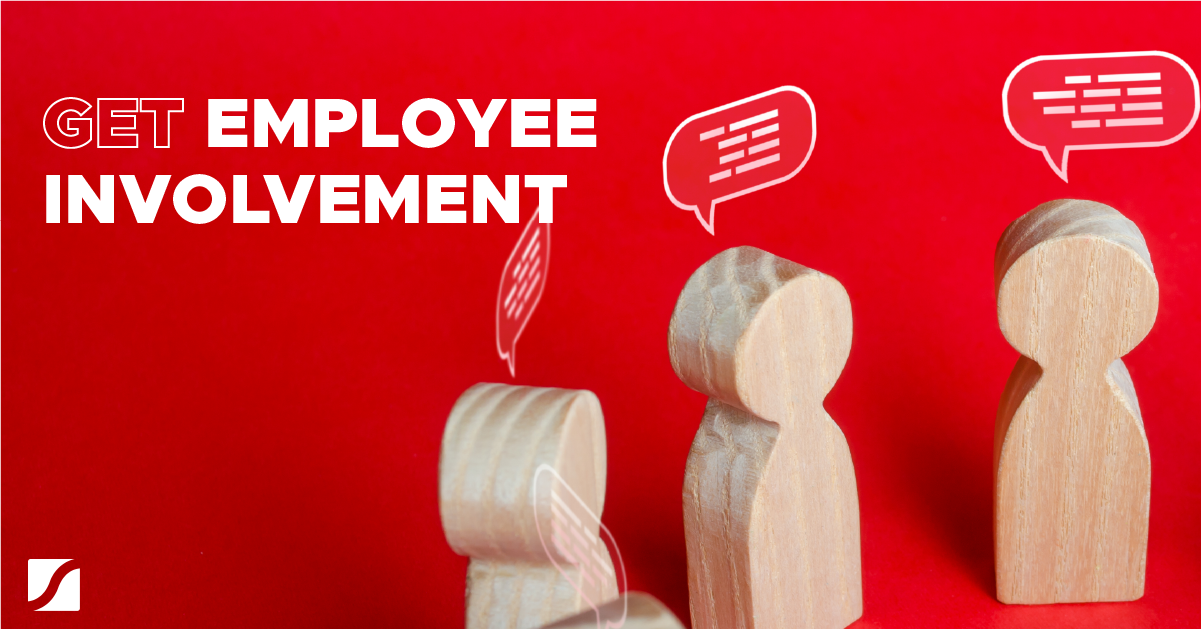Why Employee Buy-In Is Important, And How It Sets Your Company Apart

A 2021 Harvard Business Review report showed that a whopping 78% of companies failed at their efforts to shift the way they do business. If you’re an entrepreneur, CEO or other business leader focused on new ways to scale your business, that might seem like bad news. Employee buy-in can not longer be undervalued; collaboration increases job satisfaction, company outcomes and releases creative ideas through a greater sense of belonging.
But it isn’t all gloom and doom.
The report also includes an important lesson, one that can help any organization that wants to transform its approach to growth. It reveals that the 22% of businesses that successfully elevated growth through transformation had 1 thing in common:
Successful companies focused their efforts on people.
That points to the value of encouraging employee buy-in for your organization’s mission, vision, and objectives. And it supports the practice of rewarding your employees for their efforts to advance corporate goals.
By following an employee-centric approach that focuses on buy-in for your business’ goals, you can set yourself apart from your competitors that don’t succeed at transformation. You can be part of the 22% that survive—and thrive—as you grow and change your organization’s finances and reputation.
What Is Employee Buy-In?
Employee buy-in refers to your staff members’ understanding that a decision or change is necessary for your business to succeed, accepting that change, and staying engaged with the company’s efforts to meet its goals.
Employees who buy into a new way of doing business may not agree with all aspects of the change. They do, however, support it and understand how their efforts can fuel not only their own success, but also the success of the company.
Employee buy-in requires strong leadership, transparent processes, and clear communication about the benefits of the new approach.
Why Is Employee Buy-In So Important?
Employee buy-in has positive impacts for an organization’s efforts to transform and grow. But there’s more to the importance of employee buy-in than its effect on the corporate standing and bottom line.
Buy-in shows that employees understand the value they offer to your organization. This understanding is critical when companies and their employees face the challenges that come with growing a business, as Steve Baker notes in the Great Game of Business Master Business Course. Employees’ awareness of their own important role in their organization’s success keeps them laser-focused on achieving goals, in spite of any challenges they might encounter.
6 Steps To Align Employees With Company Goals
From building on strong leadership to offering incentives that encourage top performance, 6 key steps can help ensure your employees are aligning with company goals. Following are ways to promote buy-in and goal achievement.
1. Examine Your Leadership Beliefs
Baker encourages business leaders to reflect on their own beliefs when considering how to promote employee alignment with corporate goals. After all, buy-in starts with encouraging mutual respect and trust. To foster this respect and trust, leaders should have these core beliefs:
- If I don’t inform my people, someone else will.
- Given the opportunity, people want to learn the business.
- Provided the education, people can learn the business.
- Given the trust, people will make the right decisions for the business.
- Given the respect, people will contribute to the success of the business.
- People should share in the rewards they helped create.
2. Share The ‘Why’ Before The ‘How’
When it comes to corporate transformation, people get more excited about the “how” when they understand the “why.” That means it’s critical to communicate to employees the ways that changes to your organization will benefit them, you, and the company as a whole. Here are the 4 elements in understanding the “why”—and then the “how”—of organizational change:
- Awareness of the need for change
- Desire to participate in the change
- Knowledge and skills to make the change
- Reinforcement to sustain the change
3. Offer Targeted Employee Incentives
Employee incentives motivate employees to take action toward achieving corporate goals, targeting specific metrics that show performance improvement. Additionally, these incentives can build loyalty, enhance productivity, and assist with employee retention. Employee incentives can be monetary, ranging from small cash prizes to salary increases. They also can be non-monetary, offering rewards such as additional vacation time or company picnics.
4. Design An Effective Bonus Plan
The Great Game of Business recommends offering a bonus plan as an incentive. The program lists the core tenets in how to structure an employee bonus plan; it emphasizes ensuring that your company’s financial security is covered first, and then offering a gain-sharing benefit instead of profit sharing. In a gain-sharing plan, employees receive bonuses tied to specific improvements such as increased productivity or sales. Profit sharing provides monetary incentives according to an organization’s overall profit.
Bonus plans that encourage achievement of company goals have the following characteristics:
- They’re self-funded, to protect job and financial security.
- They emphasize gain sharing, providing a significant portion of the financial gain.
- They rally people around a common goal, based on a critical number toward which everyone works.
- They employ “line of sight” education, using that critical number to teach employees the business and their daily activities’ role in it.
- They create early wins, rewarding employees as early as 30 to 90 days and then building on those for quarterly payouts.
- They include plenty of communication, to inform people of the plan’s rules and how to calculate their own bonuses.
- They celebrate wins and recognize the players, thanking those who made it possible.
5. Practice Open Book Management
Open book management (OBM), the approach at the heart of The Great Game of Business, helps to demystify the process of making money and generating cash and profit. Financial transparency shows employees the impact their work has on the company’s bottom line. Making this connection encourages them to take action and offer ideas to help the organization meet its financial goals—because they understand how their own work makes a difference.
6. Monitor And Adjust Your Plans
Encouraging buy-in and goal achievement isn’t a one-and-done endeavor. To maximize success, monitor progress and adjust plans accordingly. Listening to employee feedback is an important way to determine what’s working, where there’s room for improvement, and where performance metrics should shift.
Gain Employee Buy-In And Change The Game For Your Company
Now that you understand the importance of employee buy-in and how it can help your company grow and succeed, you’re ready to start your own journey toward business transformation. For 4 decades, The Great Game of Business has helped companies stand apart from the pack by succeeding in the face of change.
Learn how people-focused efforts—emphasizing employee buy-in, engagement, and involvement—can help you scale your business. Jack Stack and Steve Baker of The Great Game of Business.


.png?width=669&height=225&name=EN_GGoB_MKT_Download%20Outline_24-03-12%20(1).png)

